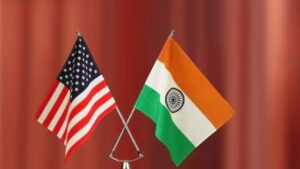Subject:
- GS-2: International Relations & Trade – WTO Compliance, India-U.S. Trade Ties
- GS-3: Economy & Global Commerce – Bilateral Trade Deals, Most Favored Nation (MFN) Clause

Key Points
India-U.S. Bilateral Trade Agreement (BTA)
- India and the U.S. plan to negotiate a multi-sector BTA by late 2025.
- Though not termed a Free Trade Agreement (FTA), it must align with WTO rules.
- Scope remains undefined per the February 13, 2025, Joint Leaders Statement.
WTO Legal Hurdles
- The WTO’s MFN principle forbids preferential trade benefits unless under recognized exceptions.
- FTAs must eliminate tariffs on “substantially all trade” between signatories.
- Selective tariff reductions without extending them to all WTO members would breach regulations.
Interim Deals & Enabling Clause
- GATT Article XXIV permits temporary “interim agreements” en route to an FTA, provided it concludes within a decade.
- The “enabling clause” for developing countries doesn’t apply, as the U.S. would also gain tariff reductions.
Upholding WTO Norms
- U.S. “reciprocal tariff” policies contravene WTO’s MFN and Special & Differential Treatment (S&DT) principles.
- India must adhere to WTO standards despite U.S. pressure.
Insights & Next Steps
- India should prioritize rule-compliant trade deals without bending WTO norms.
- Suggestion: Avoid interim agreements as a workaround unless an FTA is the clear endgame.
Mains Practice Question
“Assess the challenges India encounters in negotiating bilateral trade deals while respecting WTO norms. Propose strategies to align trade interests with global commerce rules.”




